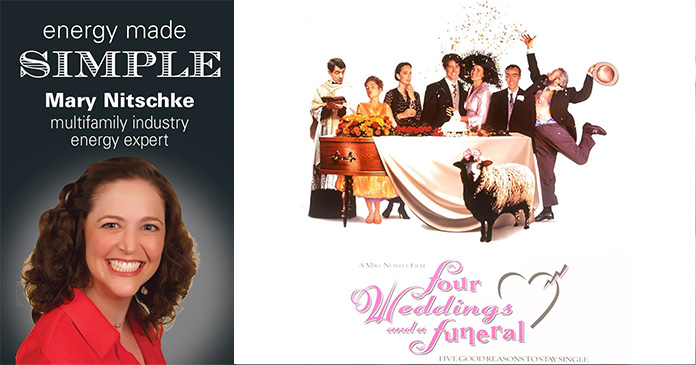“Everything else is moving at the speed of light, why isn’t the paper?” That question, asked by Debra Radice, managing director of Texas-based SyndicIT Services Corporation, was the catalyst for creation of a new digital service that promises to reduce the cost and complexity of storing and handling electronic and paper documents in the multihousing industry.
Developed specifically for the multihousing and commercial real estate markets, the SyndicIT system is a content management service with the ability to capture, store, manage, share and exchange documents in the “cloud” anytime, anywhere, using a Web browser.
The idea for the service began to take shape a couple of years ago, when Radice; SyndicIT Services Corp. managing director, set out to create a unified enterprise-wide platform for what she considered to be one of the multihousing industries most valuable assets — its business documents.
“The industry is producing more documents today than ever and a growing portion of those documents are now electronic. So, not only do we remain awash in traditional paper documents, we are now fighting to manage a tsunami of electronic files and documents.
“We saw within the industry a whole series of individual computer applications that have created a complex maze of documents that are locked up or in different formats, or tied up in multiple one-off, one-horse pony applications that almost conspire to make it difficult for almost anyone to take an enterprise view of all documents across the system.
“Whether they are property management or lease preparation or collections or pricing, those applications all have their little nuances of document requirements and are spread out over multiple applications. Any time there is a change in company philosophy about using another system or upgrades—a new version and so on—there go your poor documents, all wrapped up in some legacy maze that is a tangled mess,” said Radice.
She wanted to bring the electronic files that represent the transacting of the multihousing business in concert with the documenting of those business transactions, believing such a system would transform the legacy world of property management into the future world of multihousing business automation. “That’s a big transition, but it’s here and it’s with us now,” she said.
The paper drain
Multihousing companies looking to reduce costs need look no further than the massive amounts of paper documents piled on desks, filed in cabinets and/or stored in a maze of incongruent legacy computer applications to see that paper is a substantial drain on a multihousing company’s net operating income.
Evidence from various sources suggests that 30 to 40 percent of all staff time is consumed in handling the paper side of the business and 50 percent of that time is spent looking for information in documents, which turn out to be successful only 50 percent of the time.
In a paper-based world, it costs roughly $15 to file a document, $8 to physically store a document, $44 to retrieve a document from a repository, and as much as $40 to ship a document, when copies are made and shipped using one of the shipping services like FedEx or UPS.
The average document used in the multihousing business process workflow is printed or copied seven times within the organization. Locating a lost document can exceed $100 in cost and reconstructing or recreating a lost document costs double that.
Moreover, paper document storage takes up so much space that some apartment companies use empty garages or rental units to store boxes of files—at a substantial loss of income and increased risk of loss or theft.
Those anecdotal statistics led SyndicIT to study dimensions of competitiveness in other industries.
“There are those that have stated that profit growth leaders have 49 percent of their business processes digitized versus the average multihousing company, which is sub-30 percent digitized today. If you want to be a profit leader, one of the indications is your capacity to move to a digitized business process,” said Radice.
Ahead in the cloud
But, before SyndicIT could move ahead, Radice needed a technology that would handle the core parts of document content management, workflow processing, document capture and retrieval, sharing and publishing. She chose, as the core engine for SyndicIT, a content server by Treeno Software Inc.
The fact that Treeno had been in commercial operation with customers such as ADP, Bank of the West and Willis Insurance, for example, negated the need for beta testing.
“It is an industrial grade technology and well proven. The adaption to the multihousing industry was one of defining user filing policies, filing cabinet structures and work process extensions specific to that industry, and these designs have been tested numerous times with property managers and corporate department managers,” said Radice.
With the core driver in place, the company went on to build a single enterprise-wide platform that serves as the repository for all documents; a workflow center that is available any time—day or night—from anywhere, to whoever has the appropriate access for approvals and controls.
SyndicIT is programmed to work for all levels of a company’s operations. “It is designed to be flexible and responsive to the needs of users, from executives to leasing agents to legal and accounting staff, and to meet the needs of companies of any size, even those without IT staff and, in less than one day of training and becoming familiar, a user can be up and running without any changes to existing infrastructure and workflow processes. Out of the box, SyndicIT can mirror a company’s existing filing, sharing and workflow, doing it all at the speed of light,” said Radice.
Meet Syndi
SyndicIT uses an electronic avatar, a drag-and-drop icon called Syndi that sits on the desktop and does all the work. Syndi enables electronic documents and scanned images to be digitally captured without a scanner and properly filed in file cabinets on the desktop.
Syndi interfaces seamlessly with any software program. “If you have a data base or use applications like a property management system, QuickBooks or salesforce.com, you can reach into that data base and snatch with a click the attributes to capture and identify that document with that data base, and vice versa. For instance, if you are in QuickBooks and you are looking at an account entry, like an invoice for $1,600 from a telecommunications company, you can click on that amount and Syndi will run out and get the document and put it up in front of you, so you can see the invoice itself,” said Radice.
Syndi also establishes compliance with records retention policies—important for the larger companies—and has the capacity to recognize if a document is missing from a defined document set.
“Syndi will tell you if something is missing from that folder, so you can ensure the integrity of the completeness of your document package, such as your lease, human resource and vendor compliance files,” said Radice.
Syndi creates operating reports on all workflow processes, enabling supervisors to oversee the progress, workloads and status of workflows associated with documents.
Requirements for SyndicIT were that it be SAS 70 compliant and entirely auditable. The system provides a detailed level of audit that can be made available to the internal audit staff or external auditors and literally tracks every access to the system, every user action on the system, every document that’s been touched and any change to any document, and, if you have audit authority, you simply go onto the system, go to the audit function and audit activity on the system, said Radice.
“The time is past for property or legal auditors to incur the time and expense to travel to a property to audit locally-stored paper files,” she said.
Versions for every business need
The primary version of SyndicIT is the SaaS offering to which one user can have access for $99 per month. It includes two gigabits of storage and additional two gigabit increases are available for $5 per month. Three users can have access for $198, reducing the price per user to $66, and with more than three users the price drops to $50 each.
“The costs of these are defined as concurrent users, so you can actually have more accesses permitted that you don’t pay for, as long as they are not active at the same time. If you want 20 people to be able to hit the system at the same time, you would buy 20 concurrent users, but that doesn’t prohibit you from having 100 people from having access, but only 20 can be on at a time,” explained Radice.
Available for $8,000 is the SyndicIT vault, an Internet appliance that looks similar to a VCR or DVD player. “You take it out of the box and plug your LAN cable into it and turn it on and within 15 minutes, a lot less than that, but I will be cautious, you have the capacity of 400 four-drawer file cabinets. It sits quietly on the corner of your desk; the software is already in it, so all you do is plug it in and turn it on and there you are,” said Radice.
A third version of SyndicIT is the SaaS In-house, available to companies that want the system to run in their own data center. “So, 20 concurrent users can have access to an in-house SaaS platform, which by the way, for the technically inclined, is a Citrix/terminal server compatible, meaning you can run it in your data center as an in-house SaaS offering, and that is available for 20 concurrent users, for $999 per month,” said Radice.
SyndicIT, through its relationship with Kodak, offers an Internet, desktop scanner called the Virtual Property Assistant, featuring a touch screen interface specific to the needs of multihousing document capture. Syndi also will work with a company’s existing scanners, fax machines and today’s advanced multifunction printing systems (MFPs) to capture paper documents.
“When we go through the models, we are looking at ROI that overwhelms the fundamental cost of this system. So not only is there unbelievable cost effectiveness, but Syndi comes in three flavors that respond to the needs we’ve identified with our end-user experience,” said Radice.
She points to a recent return on investment study conducted for a large property portfolio that analyzed SyndicIT SaaS and it proved to be in excess of 400 percent, even before factoring in local and offsite paper storage costs.
Radice plans to introduce SyndicIT to the multihousing community by working with and through apartment associations’ education programs, Web-site-based materials, industry Webinars and trade shows.
“Syndi is here from the future. We know where it’s headed and Syndi is here to tell us we are ready with a proven strategy for this transformation to the property automation world,” said Radice.
Author Wendy Broffman















